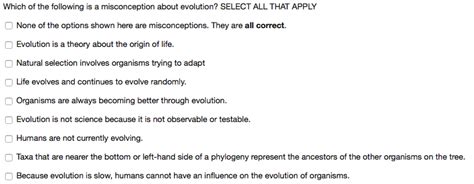In the realm of popular beliefs, misconceptions abound, obscuring our understanding of the world around us. From scientific principles to historical events, many long-held assumptions have been proven false. Here, we unravel some of the most prevalent misconceptions that have permeated our society:

1. The Great Wall of China is Visible from Space
Misconception: The Great Wall of China, a marvel of human engineering, is often believed to be visible from space.
Truth: While the Great Wall is a colossal structure, its size is not nearly large enough to be seen from the naked eye in orbit. Astronauts have confirmed that it is not visible from the International Space Station.
2. Bats are Blind
Misconception: Bats are often portrayed as blind creatures that rely solely on echolocation for navigation.
Truth: Bats possess eyesight, although their vision is generally weaker than that of humans. They use a combination of echolocation and vision to navigate, hunt, and communicate.
3. Eating Carrots Improves Eyesight
Misconception: Carrots are widely believed to enhance vision, particularly night vision.
Truth: While carrots contain beta-carotene, which is converted into vitamin A, this nutrient is essential for overall eye health, not specifically for improved eyesight. Consuming a sufficient amount of vitamin A is crucial for maintaining healthy vision, but consuming excessive amounts will not improve it.
4. Sugar Causes Hyperactivity in Children
Misconception: Parents often worry that sugar intake leads to hyperactivity and behavioral problems in children.
Truth: Numerous studies have failed to provide consistent evidence linking sugar consumption to hyperactivity in children. While some children may experience temporary mood changes after consuming sugary foods, these effects are generally mild and short-lived.
5. Lightning Never Strikes the Same Place Twice
Misconception: The adage “Lightning never strikes the same place twice” suggests that once a location is struck by lightning, it is immune to future strikes.
Truth: In reality, lightning strikes the same place multiple times. The Empire State Building, for instance, has been struck by lightning an average of 23 times per year. Tall structures, trees, and other objects attract lightning strikes due to their ability to conduct electricity.
6. The Arctic is a Barren Wasteland
Misconception: The Arctic is often perceived as a desolate and uninhabited region, devoid of life.
Truth: The Arctic ecosystem is incredibly diverse, supporting a wide range of plant and animal species. It is home to polar bears, Arctic foxes, seals, whales, and countless species of birds.
7. Bulls Charge at the Color Red
Misconception: Bulls are commonly believed to be enraged by the color red and charge at any red object.
Truth: Bulls are colorblind to red. Their aggression is triggered by movement and perceived threats, not by specific colors. The use of red capes in bullfighting is a tradition, not a biological necessity.
8. The Human Body Only Uses 10% of Its Brain
Misconception: The notion that humans only use 10% of their brains has been widely debunked.
Truth: Brain imaging techniques have shown that almost all areas of the brain are active at different times, involved in various cognitive processes and functions.
9. Ancient Egyptians Built the Pyramids Using Slave Labor
Misconception: The construction of the pyramids is often attributed to the forced labor of slaves.
Truth: While slavery existed in ancient Egypt, it is unlikely that slaves were the primary workforce used to build the pyramids. Archaeological evidence suggests that paid skilled laborers and farmers played a significant role in their construction.
10. Chocolate is Poisonous to Dogs
Misconception: Chocolate is often thought to be toxic to dogs and can cause severe health issues.
Truth: While chocolate does contain theobromine, a compound that can be harmful to dogs, small amounts of dark chocolate are generally not fatal. However, excessive consumption can lead to vomiting, diarrhea, and in rare cases, heart problems.
These are just a few examples of the numerous misconceptions that have permeated our society. Questioning assumptions, examining evidence, and seeking credible sources of information are essential for dispelling these myths and gaining a more accurate understanding of the world around us.
